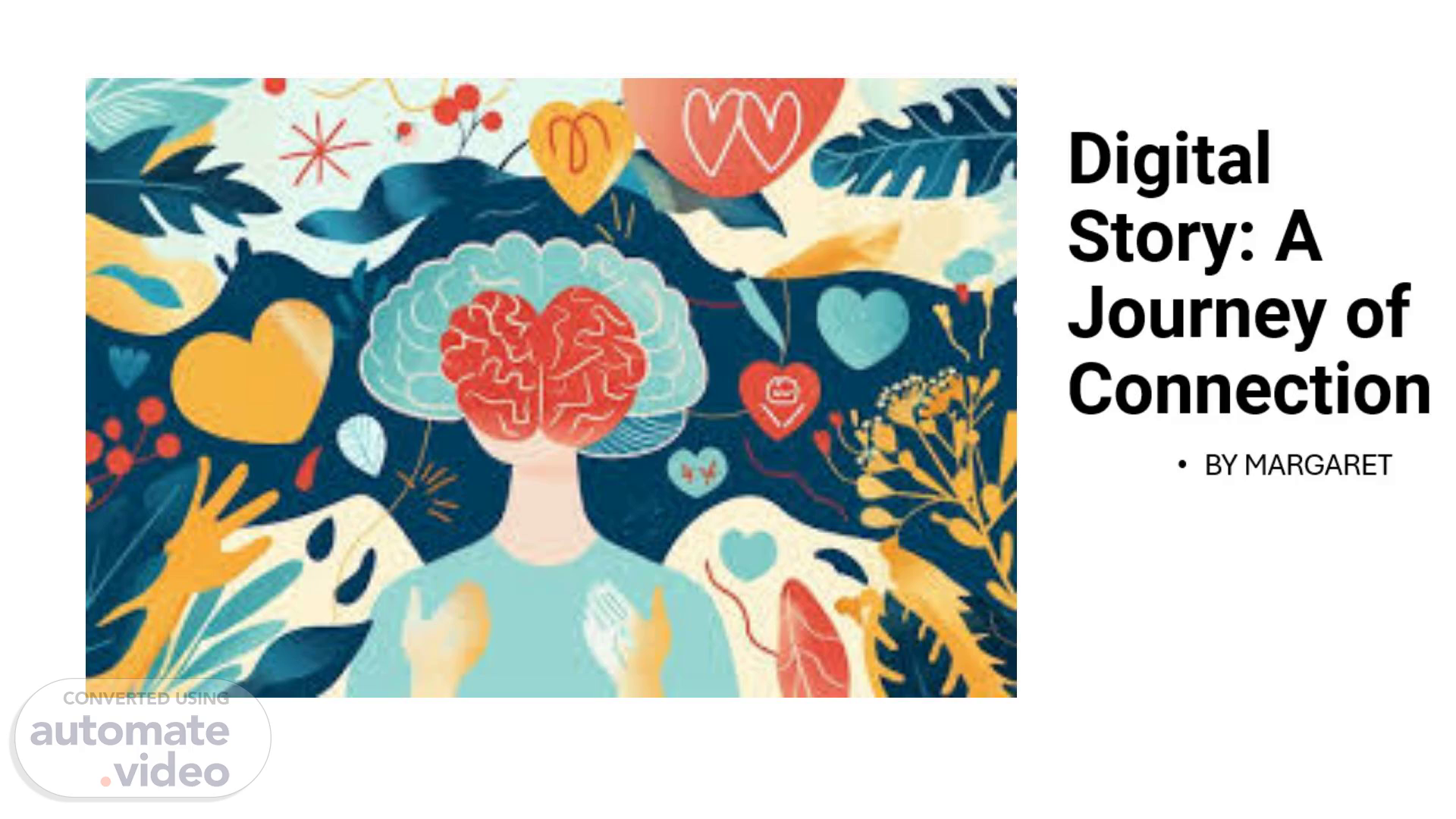Scene 1 (0s)
[Audio] Digital Story: A Journey of Connection BY MARGARET.
Scene 2 (7s)
[Audio] Hello, my name is Margaret, and I am a mental health nurse. Today, I want to share a story about my experience with a service user named "John" (a pseudonym), who has been navigating the challenges of anxiety and depression. This story reflects not only John's journey but also my own growth in communication and understanding as a mental health professional..
Scene 3 (30s)
[Audio] John is a 34-year-old man who works as a graphic designer. He's creative, intelligent, and has a great sense of humor. However, behind his smile lies a history of trauma stemming from childhood bullying and a recent job loss that exacerbated his mental health struggles. When I first met John, he was withdrawn and hesitant to open up. His family had reached out for support, concerned about his increasing isolation..
Scene 4 (55s)
[Audio] In our first meeting, I made it a priority to create a safe and welcoming environment. I introduced myself and explained my role as a mental health nurse. I remember using active listening techniques, nodding and maintaining eye contact to show that I was fully engaged. According to Carl Rogers' Person-Centered Approach (Rogers, 1951), establishing trust is vital for effective communication in therapy. John was initially guarded, but I encouraged him to share his feelings at his own pace. I used open-ended questions like, "Can you tell me more about what you've been feeling?" This allowed him to express himself without feeling pressured..
Scene 5 (1m 35s)
[Audio] As our sessions progressed, I noticed small changes in John. He began to share stories about his past and the impact it had on his present. I utilized the therapeutic technique of reflection, paraphrasing his thoughts to demonstrate understanding. For example, when he spoke about feeling overwhelmed by anxiety, I responded with, "It sounds like you're feeling trapped by your thoughts." This helped him feel validated and understood. I also incorporated elements of Cognitive Behavioral Therapy (CBT) to help him challenge negative thought patterns. Together, we developed coping strategies that he could use outside of our sessions..
Scene 6 (2m 13s)
[Audio] Recognizing the importance of family support, I arranged a session with John's sister, "Emily." I communicated openly with her about John's progress and encouraged her to be involved in his journey. By educating Emily on how to support John without judgment, we created a collaborative approach that empowered both John and his family. Throughout this process, I emphasized the importance of empathy and compassion in communication (Gerard Egan's Skilled Helper Model, 1998). I aimed to make sure John felt heard not just by me but also by those closest to him..
Scene 7 (2m 49s)
[Audio] Reflecting on my communication skills during this time, I realized the significance of patience and adaptability. Each session taught me that every individual communicates differently. Some days John was more receptive than others, and I learned to adjust my approach based on his mood and comfort level. Using non-verbal cues like facial expressions and body language helped me gauge his feelings better. I also practiced self-awareness; understanding my own biases allowed me to connect with John without imposing my views..
Scene 8 (3m 21s)
[Audio] Over several months, John made remarkable progress. He began to engage socially again, exploring new hobbies and reconnecting with friends. Our sessions culminated in a sense of empowerment for him—a realization that he could manage his anxiety and depression. Through this journey, I learned that effective communication is not just about exchanging words; it's about building relationships grounded in trust and understanding. My experience with John reinforced the idea that every service user has a unique story worth listening to..
